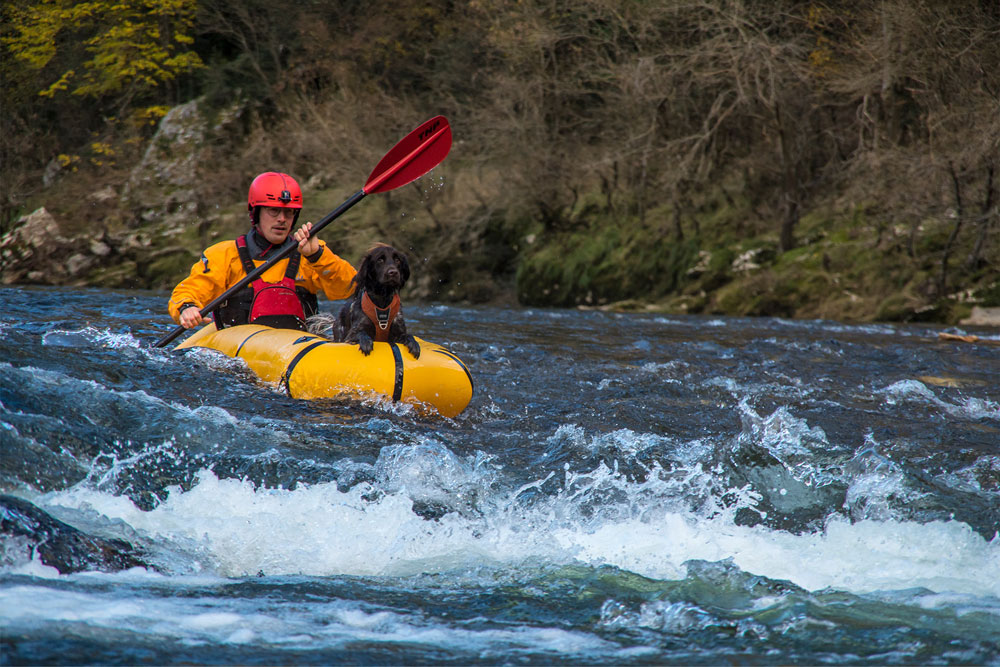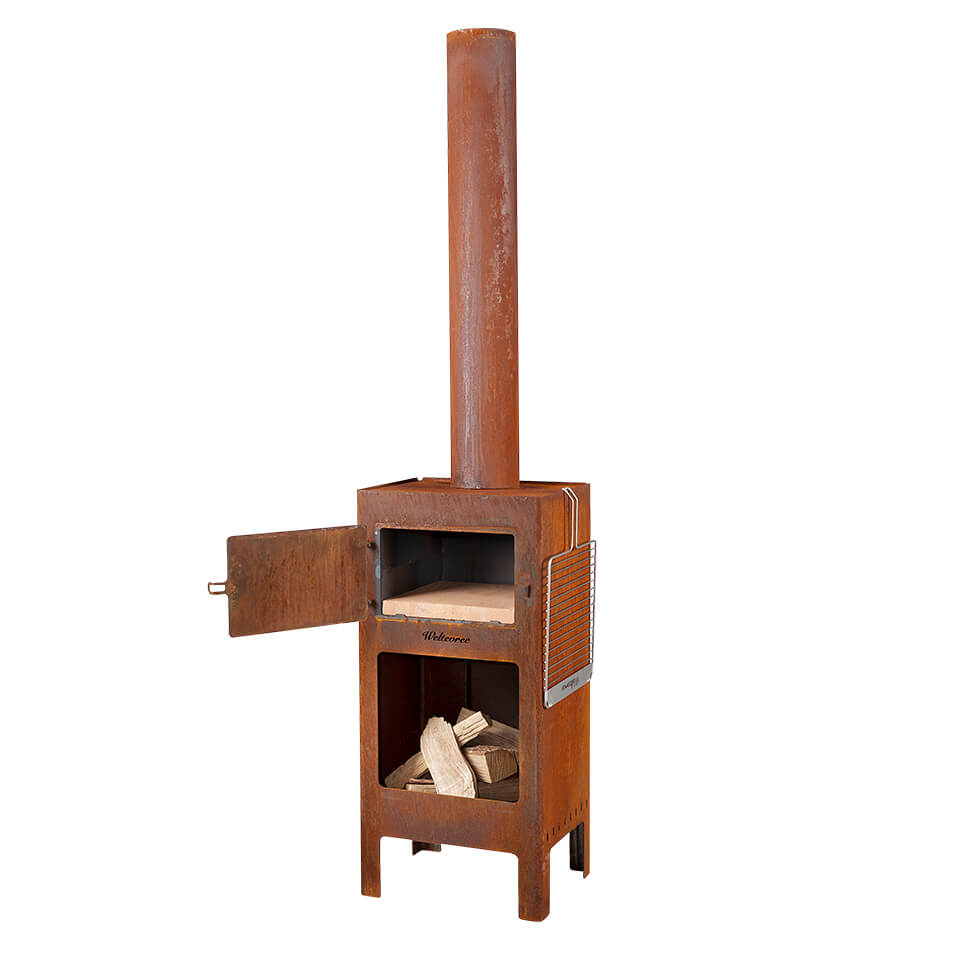
Want to get out of your comfort zone more often? Go on a micro-adventure
A faraway trip or a night of wild camping in the forest closest to your house? Most people probably choose the big adventure, but not if it's up to Mathias Michielsen. Mathias prefers to go on micro-adventures: small adventures close to home that take you out of your everyday routine. With his company Fagus Outdoor, which organizes all kinds of nature activities, Mathias goes on about seventy microadventures a year. Packrafting through the Semois Valley, spotting beavers near Leuven or preparing a meal on a homemade fire: for Mathias, the greatest adventure is in the small experiences.
The five-to-nine adventure
Most people almost never do anything truly adventurous, and that, according to Alastair Humphreys, creator of the microadventure, is a big scandal. After years of experiencing the greatest adventures around the world - think cycling from Pakistan to China or crossing Iceland on foot from north to south - Humphreys returned to his homeland Britain to encourage people to fit more adventure into their busy lives, but in the smallest and easiest way possible. He gave the idea the term microadventure: a short, cheap and local adventure with the intention of taking you out of the grind of the everyday. A small adventure that you tackle with the same enthusiasm and curiosity as a big adventure. According to Humphreys, adventures, big or small, change how you see and experience the world. You learn to experience the world with more openness, enthusiasm and curiosity. The more adventure you build into your life, the better. And that can be small, too: we work from 9 to 5, so we have from 5 to 9 to have a microadventure.
"A microadventure is a small adventure that you tackle with the same enthusiasm and curiosity as a big adventure. This is how you learn to experience the world with more openness, enthusiasm and curiosity."
Spending the night under a bush
Mathias went on microadventures before the term even existed. He found his love of nature and adventure in scouting from the age of seven. ‘Being outside, exploring, sleeping in tents and making fires were everyday things there. Here I was introduced to bushcrafting (surviving in nature with as few tools as possible, ed.) and edible plants, which later inspired me to study biology. When after my studies I started working at Natuurpunt, an organization that protects nature through volunteer work, I thought I would be outside a lot. Unfortunately, reality was different and all I did was sit behind a desk. It was during this period that I went on my first real microadventure. Out of the daily grind of working from 9 to 5 and on microadventure from 5 to 9. Together with a friend we had the idea of going to the port of Antwerp and hitching a ride on a barge. We would see where we ended up and spend the night there with a tent along the side of the river, only to hitchhike back to the city the next day and return to the office. However, once on location we found out that all the ships were heading back into town. So then we spent the night under a bush along the quay, deep in industrial terrain. It was the only green patch in the area, right up against the Schelde River. Not what we had in mind, but certainly no less adventurous!’.
‘The more adventure you build into your life, the better.’
Discovering the limits of your comfort zone
According to Mathias, that is exactly what microadventures are about: getting out of the context of the everyday and breaking free from your routine. 'You can learn to let go of your routine by looking for the boundaries of your comfort zone. That can be different for everyone: for me it's spending the night in a bush in an industrial harbor or taking the packraft out on the water and spending the night in wild nature, but for someone else it can be, for example, crossing the Wadden Islands while supping, or cycling from one side of the country to the other. You have to decide for yourself what you do or do not want and in what circumstances: what do you need to get away from your daily routine, to really get away from it all, but in the smallest way possible?’
Challenge yourself within the confines of the 9-5 work week
Like Humphreys, Mathias has also been on many big adventurous around the world: learning to make fire in Tanzania, surviving for a week in a forest in Romania, hiking in the mountains of Nepal. So what makes a micro adventure different from a macro adventure? Why go wild camping in the forest for one night and not just a weekend away? 'The big difference is that a microadventure is meant to fit within the confines of the 9-5 work week. Small adventures but great experiences. Challenging yourself to still experience a wow-feeling with minimal resources. Really getting yourself out of that everyday grind. Because a macro-adventure, a vacation, is actually a series of micro-adventures glued together. As a result, you do get back into a certain routine.' Another aspect that characterizes microadventures is your mindset, Mathias says. Sometimes a microadventure doesn't go as planned and you have to be flexible. 'If you have the mindset to have a fun adventure, it's always going to work out, regardless of the circumstances. I had recently planned to go packrafting at a lake, but once I arrived it turned out that the lake had frozen over. Then you have to think of something else, because returning home is, obviously, not an option. Eventually I hiked to another spot and packrafted on a part of the river that was not frozen. Sometimes the adventure is in the unexpected.’
"When you experience nature this closely, really immersing yourself in it instead of just looking at it, something changes in your perspective."
A magical perspective
In addition to the trips he takes with his company Fagus Outdoor, Mathias also makes time to go on microadventures of his own. Packrafting or bushcrafting is his optimal way to get away from it all. ‘My own microadventures are different: more primitive and more challenging, because I'm testing the limits of my own comfort zone. These have been stretched considerably by now. As a result, I end up on wilder rivers and make longer treks in colder or more intense conditions.' For example, Mathias takes a snowshoe trip of a few days or makes a lodging somewhere in the Ardennes where he picks edible plants and combines them into a meal on a homemade fire. During these trips, he experiences an optimal sense of freedom. 'When you experience nature up close, really immerse yourself in it instead of just looking at it, something changes in your perspective. You are so caught up in the moment - the earth beneath your feet, a fire that you have struggled to make yourself - that everything else falls away. That is the moment you feel completely connected to nature, and that is truly something magical.’


